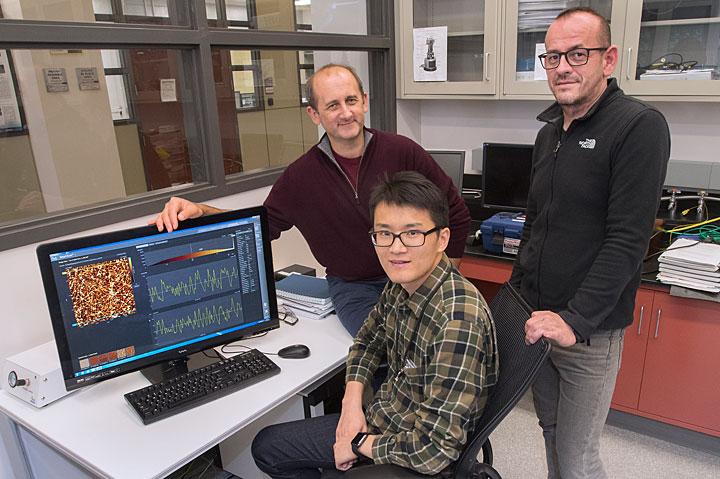
Gold nanoparticles, which act like "nanolenses," concentrate the energy produced by the extremely short pulse of a femtosecond laser to create a nanoscale incision on the surface of the eye's retina cells. This technology, which preserves cell integrity, can be used to effectively inject drugs or genes into specific areas of the eye, offering new hope to people with glaucoma, retinitis or macular degeneration.

Research associate Mingxing Lin (sitting) and materials scientists Dmytro Nykypanchuck (left, standing) and Mircea Cotlet of Brookhaven Lab's Center for Functional Nanomaterials dramatically improved the light response of electronic devices made out of graphene and an electrically conducting polymer by changing the morphology of the polymer from a thin film to a "nanowire" mesh. An image of this mesh architecture--captured with an atomic force microscope, in which a small mechanical transducer called a cantilever probe scans across a material's surface--is seen on the computer screen.